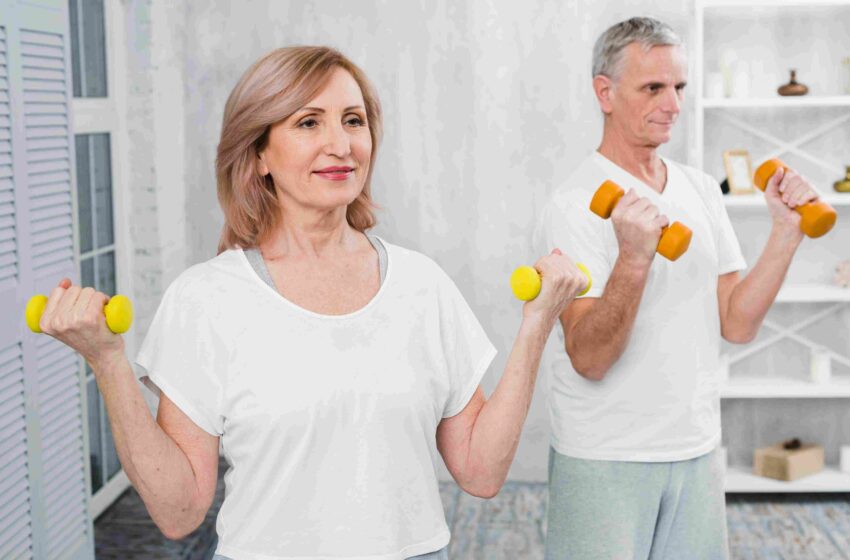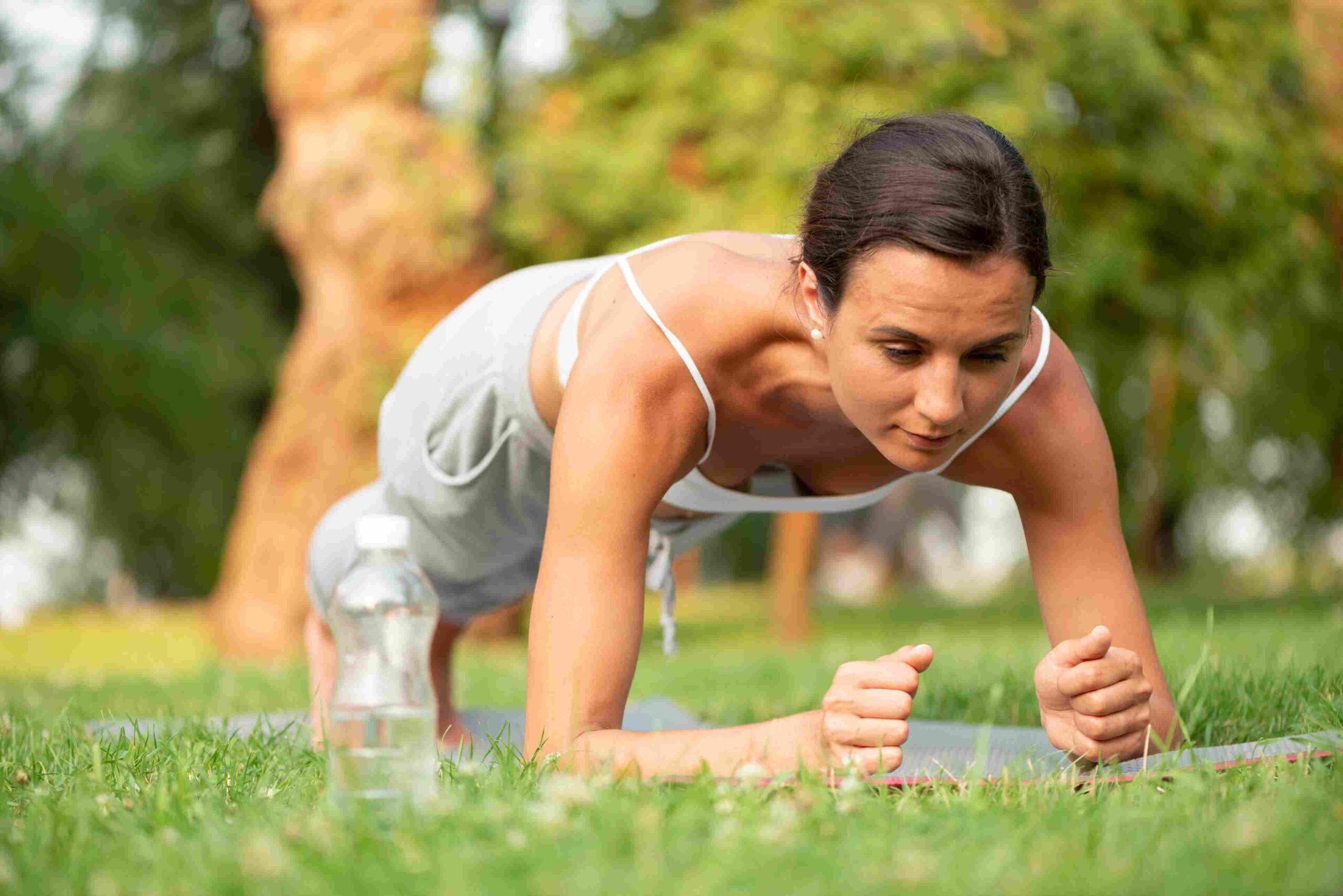
Redefine Your Age By Following These Simple Health And Fitness Tips For Older Adults
When you are getting older, your body and mind change in different ways. The idea of staying healthy and fit finds new definitions, and accordingly, habits are built and followed. It’s therefore crucial for adults to understand what’s the right path for them to follow to achieve a healthier version. Following the right nutrition plan, exercising, active participation in mental activities, and socializing are some ways to keep your aging body on track. But everyone’s body is different, and so are their nutritional and fitness needs. So how do you navigate the realm of health and fitness for older adults? This blog might help you find some reliable answers to this question.
In this blog, we’ll keep things simple and sorted so it’s easy for everyone, especially our senior adults to understand and follow. We shall discuss some very easy-to-follow but at the same time beneficial health and fitness tips that you can introduce into your daily life to redefine your growing age because aging shouldn’t have to be always associated with boring exercise routines and pale meal plans, should it?
Table of Contents
ToggleUnderstand The Changes Of Your Body As You Age
As you get older, you find it difficult even to carry out the simple mundane tasks such as carrying a bag full of vegetables, moving a table, climbing stairs, moving a bucket of water, recalling what you ate two days before, or simply walking a few steps or standing for a long time. This happens because as you age, so do your organs, tissues, and different parts of your body. The metabolism (the conversion of food into energy using the chemical reactions taking part inside the body’s cells) also tends to slow down with age, as a result of which various physical and mental abilities of your body may get restricted. You might face issues like muscle weakness, knee stiffness, brittle bones (osteoporosis), short memory, frequent joint pains, shortness of breath, inability to communicate clearly, or loss of balance. Sounds daunting, right? But don’t worry, by following a healthy exercise routine and a balanced diet meal plan, you’ll soon start to see a significant difference in your health and find a newer strength to combat these issues, or you can avoid the onset of these issues by starting early.
Why Is It Important To Be Physically Active?
When we talk about “fitness for older adults,” we immediately associate it with being physically active, but by physical activity, we don’t always mean high-intensity exercise. Physical activity can also imply just moving your body around more often than usual. But why is physical activity so important and necessary?
We understand that with old age, the capability and will to move around frequently reduces or even diminishes, but it’s important to understand that being physically active plays a crucial role in keeping older adults healthy, independent, and happy.
Now speaking of exercise, we all know the benefits that regular exercise can have on our body, mind, and soul. It is the single most life-changing habit that not only old people but people of every generation are advised to inculcate. In the case of senior adults, however, exercise is one of the simplest ways to maintain their health and fitness. Exercising regularly has shown a greater level of fitness for older adults, helping in reducing a number of diseases like heart disease, diabetes, osteoporosis, dementia, etc.
You can start by following simple exercises that are of low intensity and then gradually move onwards to moderate-intensity and high-intensity exercises. But always remember to listen to your body’s needs before trying any of these.
Low-Intensity Exercises
Low-intensity exercises are those physical activities that will require little to no effort and no assistance. This may include:
- Walking around the house
- Making your bed
- Cooking
- Watering the plants
- Filling the bottles with water
- Washing dishes
- Dusting
- Cutting vegetables or peeling fruits
As you can see, these include mundane tasks, but you can make prominent progress in your fitness journey by routinely doing any of these tasks.
Moderate-Intensity Exercises
These exercises will require little effort and can be carried out with or without any assistance. This may include:
- Yoga
- Normal stretches
- Brisk walking
- Breathing exercises
- Light jogging
- Moving buckets full of water
- Moving desks and tables
- Dancing
- Hiking
- Cycling or biking
- Water aerobics
High-Intensity Or Vigorous-Intensity Exercises
These groups include workouts that can tire you easily or make you feel short of breath, so it’s advisable to do these exercises under stringent supervision or after taking a health professional’s advice. Some vigorous-intensity exercises include:
- Aerobics
- Fast running
- Lifting heavy weights
- Swimming
- Climbing high altitudes
- Football or any other sport
- Martial arts
The Various Benefits Of Exercises

Exercise can not only have positive effects on your body, but it also has mental, social, and emotional benefits. Let’s understand how.
1. Physical Benefits Of Exercise
- If you are focusing on fitness for adults, then you must know that it’s very important to focus on strength training. As adults are prone to losing weight and muscle mass, it’s important to follow an exercise routine that includes workouts to enhance body strength and help gain muscles, such as lifting weights.
- In older adults, stiffness of joints and decreased body flexibility are a very common problem. Adults often have to deal with mobility issues due to this, which causes a lot of discomfort and a sense of dependency in them. Therefore, by doing exercises like stretching and yoga, which build body flexibility and reduce joint pains, adults can find relief from body stiffness and prevent the risk of injuries.
- When you exercise, the excess stored fats get burned, which is crucial to maintaining an optimal weight. Adults often tend to sit for prolonged hours, which fuels the weight gain process. Besides, they also have problems regulating their appetite, which adds more to the problem. Doing simple exercises like walking or running can burn calories and help to regulate appetite, which in turn reduces the risk of health problems related to being overweight or obese like diabetes and hypertension.
- If you don’t want to suffer from osteoporosis (brittle bones) and fractures, then it’s advisable to include exercises that strengthen bone density. Try brisk walking or light jogging, which involves your bones’ activity. This will make your bones stronger, reducing their risk of fractures.
- Adults lose balance easily and can trip over and hurt themselves. This mainly results from fatigue or reduced stamina, which makes it hard for them to even endure standing for a long time. Engaging in exercises that focus on building balance and stamina can help adults move freely without getting hurt and also improve their overall energy levels.
- Chronic diseases like cardiovascular diseases, hypertension, and high cholesterol levels are more prominent in individuals of 65+ age. Lack of exercise and an inactive lifestyle are the main causes of such diseases. Therefore, it’s important to indulge in exercises like aerobics, running, swimming, or cycling, which improve blood circulation, strengthen the heart, and change the excess cholesterol to energy.
2. Mental Benefits Of Exercise
- One of the common traits in older people is lower levels of social or work engagement. This can be due to various reasons that are likely to be a part of it, such as a feeling of fatigue, a lack of interest in socializing, financial restrictions, or low stamina. However, not engaging in any kind of activity can boost the production of stress hormones called ‘Cortisols’ and reduce the production of happy or feel-good hormones called ‘Endorphins’. Exercising has been shown to optimize the production of both of these hormones, which results in a lighter mood and reduces symptoms of depression and anxiety. Regular exercise also instills a sense of independence and confidence, which adds to mental peace.
- Most of us have often seen our grandparents or elders struggling with remembering things. Do you know why that happens? With growing age, the cognitive function of our brain, that is, the ability of our brain to think and function properly, tends to deteriorate. This can result in problems like dementia, impaired cognitive functioning, and other brain-related problems. Doing regular exercise can stimulate the growth of new brain cells, which avoids the occurrence of these diseases.
- When you exercise, your body gets tired easily. A tired body leads to a tired mind and helps in falling asleep easily. So, if your old age is giving you trouble with irregular sleeping patterns, then try doing simple exercises and look for the difference yourself.
3. Emotional And Social Benefits Of Exercise
We all, at some point in our lives, have come across a group or two of seniors in a circle, laughing their hearts out while throwing their arms up in the air. Don’t they look happy? That’s because:
- Exercise can have immense positive effects on our minds. Especially in the case of adults who are either retired or aren’t very socially active, exercising allows them to engage in group activities, be a part of a community, and elevate their overall mood.
- Exercise also promotes their fitness, which helps them to carry out tasks like shopping, cleaning, and doctor visits on their own without requiring any assistance, enhancing their freedom.
Therefore, being physically active and exercising regularly is very essential to maintaining optimal health and fitness for adults. But exercise alone won’t do any wonders if you don’t combine it with a nutritious, balanced diet.
Role Of Nutrition In Maintaining Fitness For Adults
Nutrition and fitness go hand in hand. Giving your body the right nutrients can help your body stay fitter than it can by only exercising. But with growing age, the nutritional needs of the body also change. So it’s advisable to figure out which diet suits you better, and once you do, try to stick to one plan without many alterations. You can also indulge in cooking and try out curated recipes for yourself. This shall give you the freedom to add the specific nutrients you want in proportionate amounts and can also be fun and enjoyable.
- Just like exercise, good nutrition is physically, mentally, and socially beneficial. Eating good food regulates your metabolism, which provides enough energy to the body to conduct various physical activities. Adding vitamins and minerals to the diet boosts the immune system, which helps in fighting infectious diseases. Since older people are more prone to chronic diseases, they must follow a nutritious diet, which will reduce the risk of cardiovascular diseases, diabetes, and some cancers.
- Maintaining a well-planned, balanced diet also helps in boosting mental health, and reduces stress and anxiety.
- Through the need to maintain proper nutrition, you can get involved in cooking classes or community health programs, which will help you socialize with people and combat loneliness or isolation.
What Is The Right Nutrition For You?
Though nutritional plans vary from person to person, age to age, and gender to gender, there are certain general tips that you can follow that can be beneficial (depending on hour-specific requirements). It’s advisable to lower the intake of calories and switch to more proteins. Since with age the digestion power also weakens, it’s better to take fibrous foods that are easy to digest and provide the necessary nutrients.
- Try to cut down on foods with high calories and foods rich in saturated fats like pizza, pasta, cakes, pastries, butter, high-fat milk, and creams.
- Eat more colorful vegetables, fruits, cereals, whole grains, legumes, and beans, which are rich in dietary fiber and are easy to digest.
- Include lean proteins in your diet like chicken, fish, legumes, nuts, and eggs.
- Switch to healthy fats like foods containing monounsaturated and polyunsaturated fats, such as avocado, milk, nuts, omega-3 and omega-6-rich fish, and olive oil.
- Avoid eating processed or packaged food items. Try to cook your meals if feasible or eat home-cooked food as much as possible.
- Keep yourself hydrated by drinking water and other healthy liquids like milk and fruit juices.
- Stay away from foods containing additives like added sugars, salts, or preservatives.
- Avoid intake of fried foods, alcohol, and aerated drinks. These foods are hard to digest and can make you fall sick often.
Major Takeaways
As you can see, health and fitness for older adults are not only determined by regular exercising or being active physically but also require an equal contribution of good food and diet, being socially engaging, and practicing mental health exercises. The key to being healthy when you are old is not confined to any recipe book or fitness app but rather exploring your body’s changing needs and providing it with the right plan. By following some simple tips, you can redefine your age and enjoy the golden years of your life without any worry or restrictions.
So, the next time you feel too old, remember that it’s never too late and it requires only a few simple changes to elevate your quality of life and rewind your youth. Happy aging!
Disclaimer: This blog is for educational purposes and reflects the author’s views. It is not medical advice. For health concerns, consult a professional. The author is not liable for any reliance on this content.

